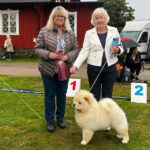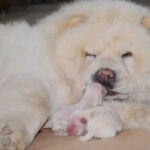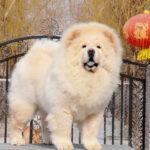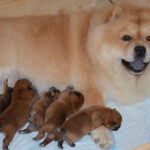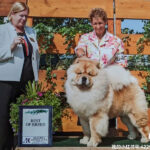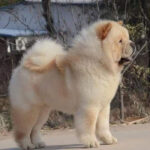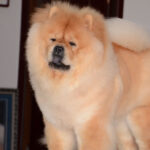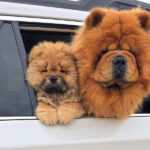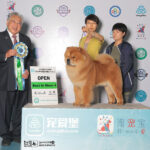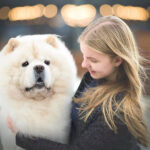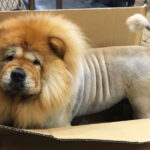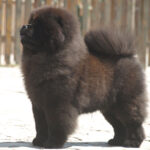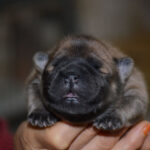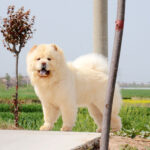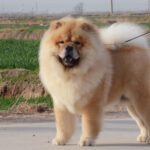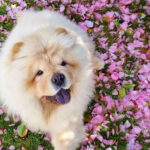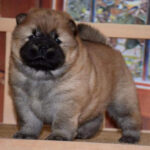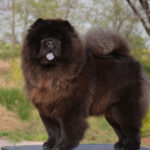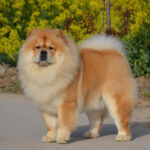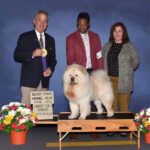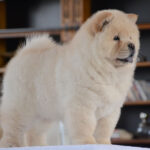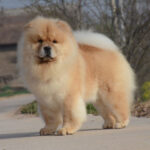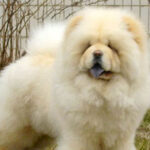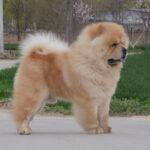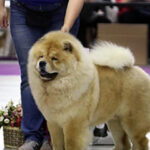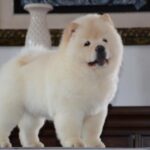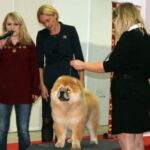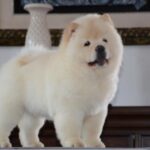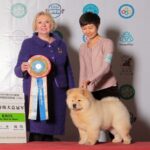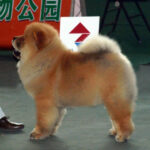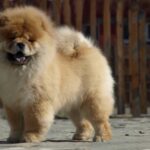
Understanding Chow Chow size variations is essential for several reasons. It helps potential owners make informed decisions when selecting a Chow Chow as a pet. By understanding the average size range of Chow Chows, individuals can assess if the breed’s size aligns with their living situation and preferences. For example, someone living in a small apartment may prefer a smaller-sized Chow Chow, while those with ample space might be more comfortable with a larger one.
Additionally, comprehending size variations enables owners to anticipate the specific needs and challenges associated with different sizes. This knowledge aids in proper care, including providing appropriate nutrition, exercise, and healthcare tailored to the size of the Chow Chow. Understanding size variations also fosters realistic expectations, as it helps owners appreciate the uniqueness of each Chow Chow and embrace their individual characteristics and potential health concerns associated with their size.
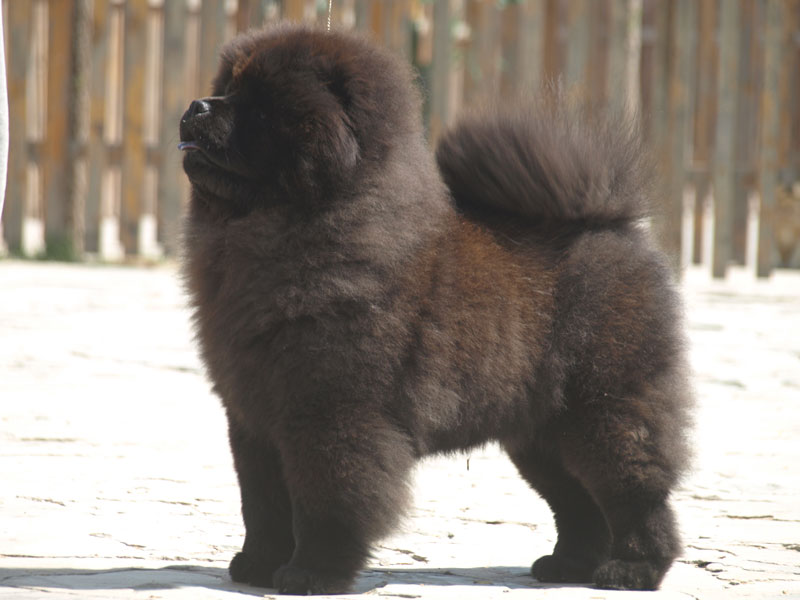
When fully grown, these dogs typically measure between 17 and 20 inches in height at the shoulder. In terms of weight, adult Chow Chows generally range from 45 to 70 pounds. It’s important to note that individual Chow Chows may fall outside this average range due to various factors such as genetics, diet, and exercise. The size of a Chow Chow can also vary depending on its gender, with males typically being larger and heavier than females. Age plays a role in size, as Chow Chow puppies are considerably smaller and lighter than adult dogs, usually weighing around 10 pounds at birth.
To accurately measure the size of a Chow Chow, several key measurements can be taken. Start by measuring the height at the shoulder, which is the highest point of the dog’s front shoulder blades. Use a measuring tape or ruler to record the distance from the ground to this point.
Next, measure the length of the Chow Chow from the base of the neck to the base of the tail. Ensure that the dog is in a natural standing position and measure along the spine to determine the length. This measurement gives insight into the dog’s body proportions and can help assess their overall size and conformation.
Another important measurement to consider is the circumference of the dog’s chest. Wrap a measuring tape around the broadest part of the chest, just behind the front legs. This measurement indicates the Chow Chow’s chest size and can be useful for determining appropriate harnesses or clothing.
Lastly, it’s important to weigh the Chow Chow using a reliable scale. Weigh the dog while they are standing on the scale, ideally with minimal clothing or accessories. Recording their weight provides valuable information about their overall size and helps monitor their health and well-being.
Size variations in Chow Chows can be influenced by several factors, including genetics, diet, and exercise. The genetic makeup of a Chow Chow plays a significant role in determining its size, as certain genes inherited from the parents can impact growth and development. Responsible breeders who adhere to breed standards also play a part in shaping the size variations within the Chow Chow breed through selective breeding practices.
Providing a well-balanced and nutritious diet is essential for promoting healthy growth and development. A Chow Chow with a proper diet receives the necessary nutrients to support bone and muscle development, which can have a direct impact on its overall size. It’s important for owners to be mindful of the Chow Chow’s dietary needs and avoid overfeeding, as excess weight gain can lead to size variations that may not be in line with the breed standard.
Regular physical activity helps keep the dog in a healthy weight range and promotes proper muscle development. By engaging in regular exercise and providing opportunities for physical exertion, owners can ensure that their Chow Chow reaches its full size potential while maintaining good muscle tone and overall physical fitness. Conversely, a lack of exercise or a sedentary lifestyle can contribute to weight gain and decreased muscle tone, potentially impacting the dog’s size and body condition.
While genetics, diet, and exercise are influential factors in size variations, it’s important to recognize that individual variations within the breed are common. Each Chow Chow has its own growth pattern and size potential, which may deviate slightly from the average.
When it comes to comparing Chow Chows with other breeds of similar size, like the Akita and Samoyed, we can observe both similarities and differences. These breeds fall within the medium to large size range, sharing a common physical stature. The Chow Chow, renowned for its unique appearance and reserved nature, can be compared to the Akita in terms of their robust build, strong bone structure, and dignified presence. Both breeds exhibit a deep loyalty and protective instinct towards their families, making them excellent guardians. On the other hand, the Samoyed stands out with its cheerful and outgoing personality, setting it apart from the more reserved Chow Chow and Akita. Despite their similar size, the Samoyed’s friendly and sociable nature makes it more approachable and inclined towards social interactions. While each breed possesses its distinct characteristics and temperament, their similar size range provides potential dog owners with a useful reference point for selecting a medium to large-sized companion with varying temperaments and qualities.
When comparing Chow Chows to larger breeds like the German Shepherd and Golden Retriever, it becomes evident that there are significant differences in size and physical attributes. While Chow Chows can be categorized as medium to large-sized dogs, they are relatively smaller in comparison to these larger breeds. German Shepherds and Golden Retrievers are renowned for their larger frames, athletic builds, and muscular appearances. In contrast, Chow Chows possess a robust and solid build, but they do not match the size and physical prowess of their larger counterparts. German Shepherds, in particular, are recognized for their remarkable agility, strength, and exceptional working abilities, which set them apart in terms of physical capabilities. On the other hand, Golden Retrievers are celebrated for their friendly and outgoing nature, as well as their gentle temperament. These larger breeds often outweigh Chow Chows and command a more imposing presence due to their sheer size. However, despite the differences in size, Chow Chows retain their unique characteristics, such as their dignified demeanor and independent nature, making them an appealing choice for those seeking a medium-sized breed with distinct traits.
When it comes to comparing Chow Chows with smaller breeds like the Shiba Inu and French Bulldog, there are distinct contrasts in terms of size, appearance, and temperament. Chow Chows, classified as medium-sized dogs, boast a more robust and substantial physique compared to their smaller counterparts. Shiba Inus, known for their compact and agile build, exhibit a slender and muscular structure that sets them apart from Chow Chows. French Bulldogs, on the other hand, display a compact and stocky frame with their endearing squished faces. In terms of personality, Chow Chows are often characterized as independent and reserved, whereas Shiba Inus are renowned for their spirited and strong-willed nature. French Bulldogs, on the contrary, are beloved for their friendly and sociable dispositions. Despite the size differences, all three breeds share certain endearing qualities, such as loyalty and affection towards their owners.
Responsible breeders meticulously choose mating pairs based on specific criteria to ensure that the offspring possess the desired characteristics, including size. The breed standard for Chow Chows serves as a guideline, outlining the ideal size range for these magnificent dogs. Breeders strive to produce puppies that conform to these standards, maintaining consistency in size throughout the breed. However, it is important to recognize that individual variations may still occur within the breed due to genetic factors inherited from the parents. Lineage, ancestry, and the presence of certain genes can all contribute to the ultimate size of a Chow Chow.
Male Chow Chows typically exhibit a larger and more robust physique compared to their female counterparts. This disparity in size can be attributed to hormonal and physiological differences inherent in the male and female anatomy. In general, male Chow Chows tend to possess broader heads, more muscular frames, and a greater overall body mass. Female Chow Chows tend to have a slightly smaller and lighter build, with more delicate features that accentuate their femininity. That while gender differences in size are often observable, there can be variations within individuals and specific bloodlines. Therefore, it is advisable to consider various factors when selecting a Chow Chow as a pet, including temperament, compatibility with your living situation, and the overall suitability of the dog for your lifestyle.
The nutritional content and composition of the food they consume have a direct impact on their growth trajectory. Optimal growth and size can be achieved by providing a diet that contains high-quality proteins, essential fats, carbohydrates, and a comprehensive array of vitamins and minerals. These nutrients are essential for promoting robust bone and muscle development in Chow Chows. To ensure their nutritional needs are met, it is important to feed Chow Chows according to their specific requirements, taking into consideration their age, activity level, and overall health. Overfeeding or underfeeding can lead to adverse effects on their growth and well-being.
When it comes to managing the size of your beloved Chow Chow, there are several important tips to keep in mind.
By following these tips for managing your Chow Chow’s size, you can help them lead a healthy and balanced lifestyle. Remember to provide them with a nutritious diet, tailored exercise routine, and regular veterinary care. By doing so, you are actively contributing to their overall well-being and ensuring they maintain an optimal size and weight.

